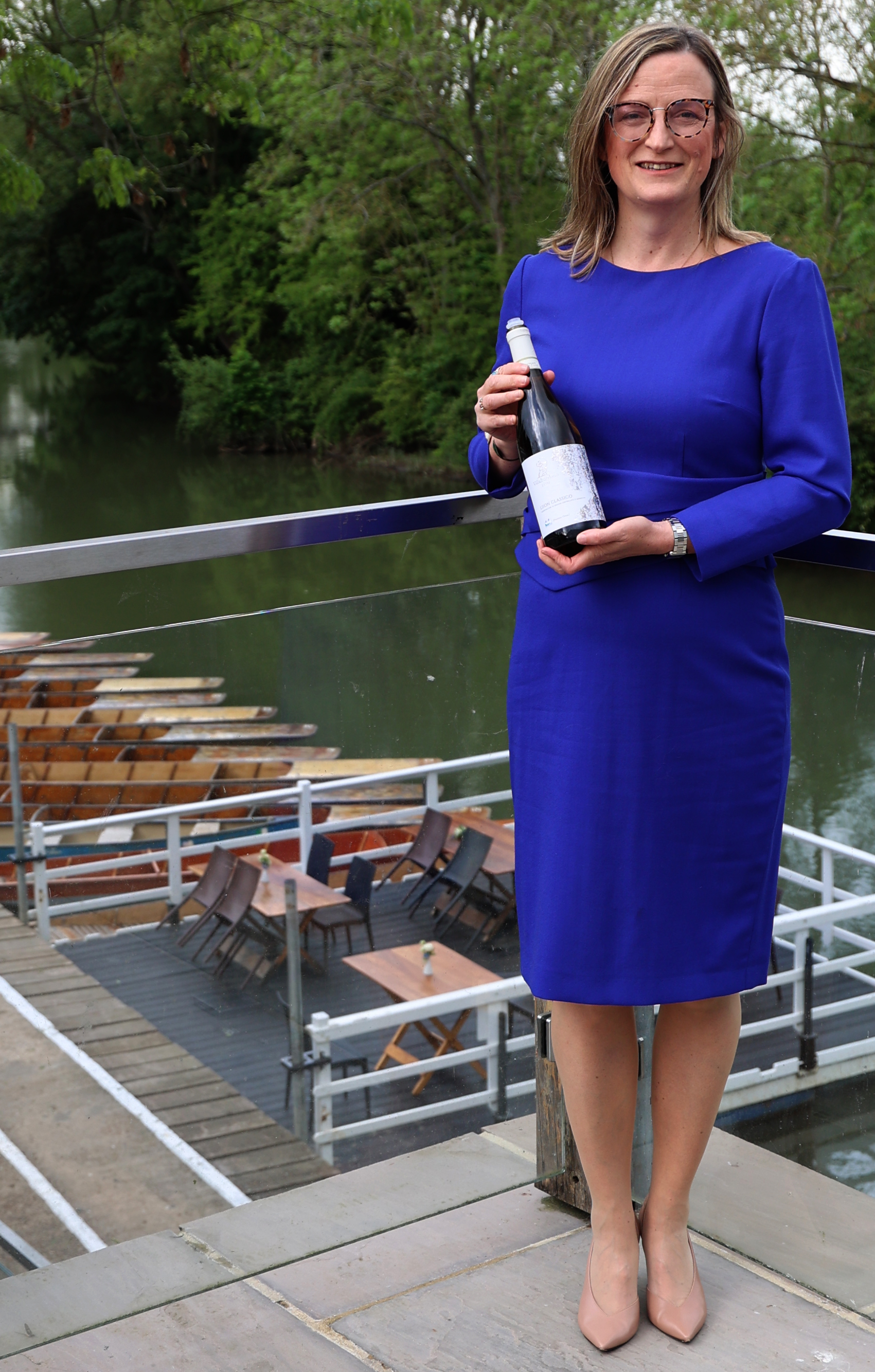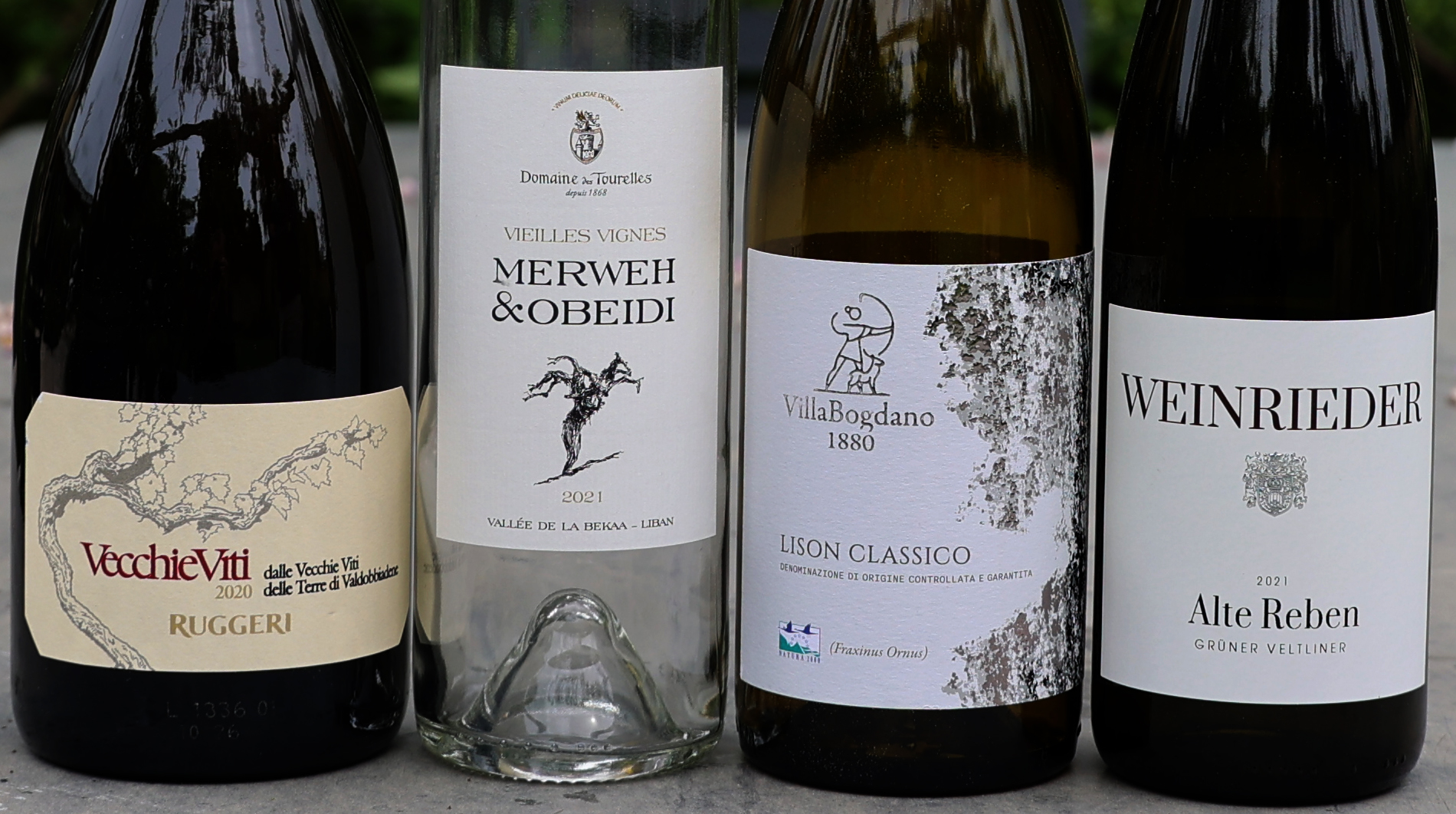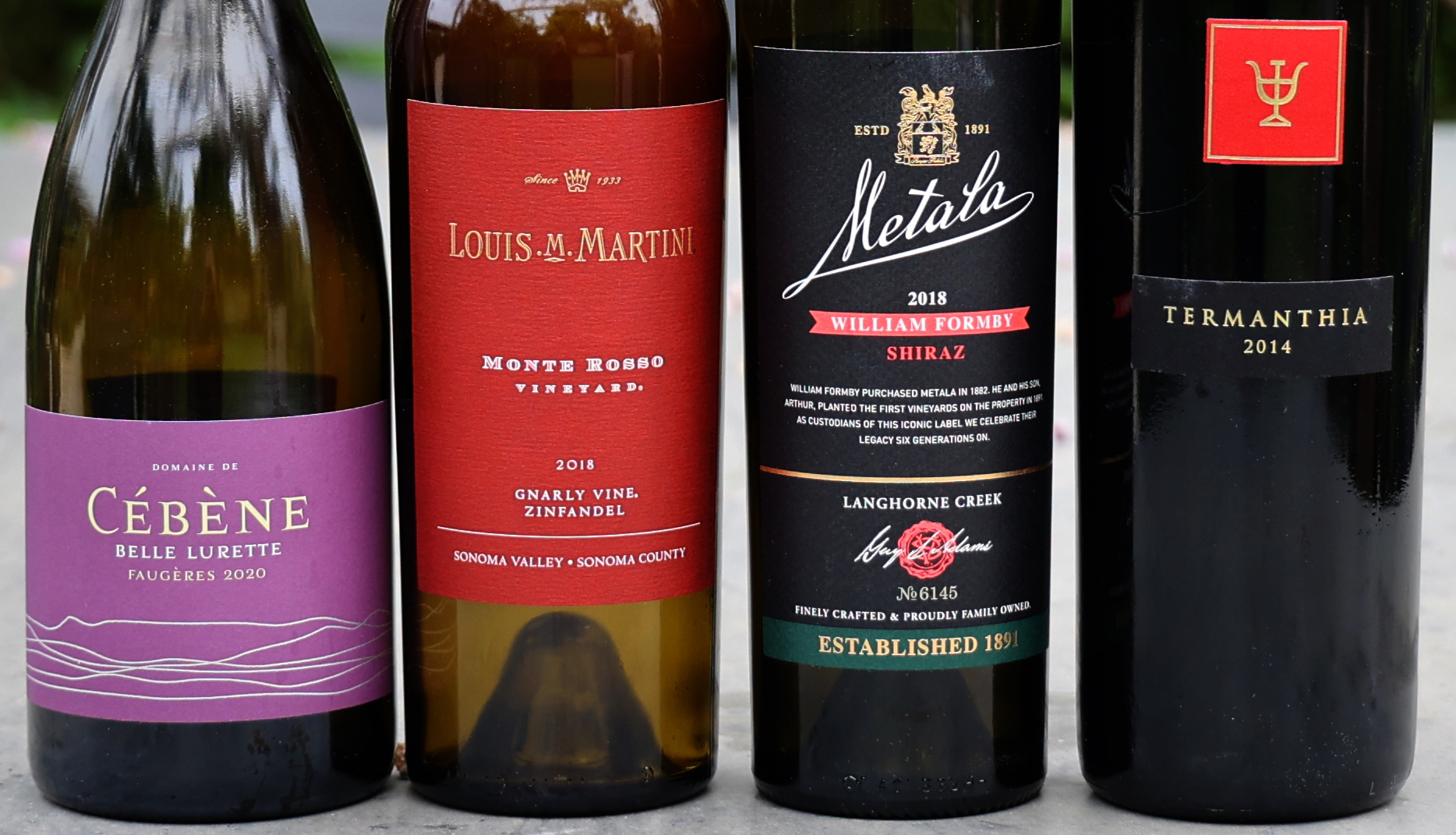 This was a remarkable tasting from a remarkable presenter. As one awed member of the Club commented afterwards it was a perfect demonstration of the Club’s rationale: to offer members the chance to try wines they wouldn’t or couldn’t usually drink.
This was a remarkable tasting from a remarkable presenter. As one awed member of the Club commented afterwards it was a perfect demonstration of the Club’s rationale: to offer members the chance to try wines they wouldn’t or couldn’t usually drink.
Sarah Abbott MW has been described by the IWSC – for whom she judges – as a ‘pioneering force’ in the world of wine. She’s a Roederer-award listed writer, an ambassador for the London Wine Fair and is deeply involved in the ‘Judgement of London’ a tribute to Steven Spurrier which will set not just France against California but Europe against the Rest of World on 20 May 2024.
But, more important to her – and to the wine industry as a whole – may be the Old Vines Conference (www.oldvines.org) which she co-founded with Leo Austin and Alun Griffiths MW in 2021 to ‘galvanize a global movement to nurture and value old vines’. In an era of climate change and ‘genetic erosion’, the future of wine may very well lie in its past. The industry needs the resilience that diversity brings rather than relying on the top ten or so varieties (out of 10,000 worldwide) that account for around one-third of vineyard land and dominate supermarket shelves.
There is no single (or legally approved) definition of ‘old vines’. It varies country by country and region by region. It’s generally 30-35 years minimum, whereas in most ‘commercial’ vineyards, the vines are pulled and replaced after 25 years of being ‘pushed to extremes’.
It’s only after 30 or so years that most vines will develop what Sarah termed a ‘woody reserve’ in the trunk that help them deal with extreme weather and disease. However, in Lodi (USA) it’s 50 minimum; in Priorat 70 minimum and the oldest vineyards now known go back into the 19th century and – lucky us – we tasted some of the wine they produce!
And it’s not just that older vines are more resilient. It’s that old vineyards, often long abandoned or lost, hold varieties that have been forgotten but possess extraordinary qualities that an over-heating and weather-stressed world needs. An example of such a discovery would be Lebanon’s ‘Obeidi’ (wine no 2 of our tasting). Found growing at 1100 metres and now re-cultivated it’s not only fairly high-yielding but extremely drought tolerant. Many such vineyards were lost because they were inaccessible, or simply too tough a terrain for men and women to work. Now, these varieties can help restore the economic viability of rural areas and help reverse depopulation. And, lastly, old vines can be a ‘beacon of talent’. They attract skilled farmers with a deep connection to the land. If we can’t farm we can’t live and we therefore need that talent more than ever.
Sarah’s selection of wines was remarkable. Helped by the generosity of the producers she featured we were able to taste wines worth as much as £200 per bottle. It’s fair to say that the price of the tasting to members present on the night barely covered the retail cost of wine no 8 alone (Bodegas Numanthia’s Termanthia from Spain).
We started with a glass of Prosecco from the Ruggeri winery founded by Giustino Bisol in 1950. Bisol’s family have centuries-old link to viticulture in the Valdobbiadene. The winery is now owned by Ferrari but it’s still family-run and still dedicated to preserving the ancient terraced landscapes of these mountains and their individually-staked 80-100 year-old vines. Unlike most Proseccos, this is a blend incorporating not just the ubiquitous Glera but also Verdiso, Bianchetta and Perera, heritage varieties that used to be co-planted as field blends to provide insurance against one or other of the varieties doing badly in any given year.
centuries-old link to viticulture in the Valdobbiadene. The winery is now owned by Ferrari but it’s still family-run and still dedicated to preserving the ancient terraced landscapes of these mountains and their individually-staked 80-100 year-old vines. Unlike most Proseccos, this is a blend incorporating not just the ubiquitous Glera but also Verdiso, Bianchetta and Perera, heritage varieties that used to be co-planted as field blends to provide insurance against one or other of the varieties doing badly in any given year.
Prosecco might be the ‘wine that wine lovers love to hate’ but this delicate, gently sparkling example was perhaps closer to the earliest style of prosecco in the 18th century when it was made with a variant of the Metodo Ancestrale rather than tank-fermented. Bisol’s wine spends about 3 months on the lees and for the family it acts as “tribute to our country and to the men and women who with their hands cultivated this land”.
£30-34 from The Great Wine Co in Bath. 12% alcohol and around 8 g/l sugar.
Wine no 2 was Domaine de Tourelles’ Old Wine Merwah – in fact a 50/50 blend of Merwah and Obeidi. The Merwah vines, grown at 1400 metres in the Bisharreh mountains, are over 100 years old, whilst the Obeidi, grown slightly lower in the western Bekaa Valley are around 50 years old. Found wild and recuperated, these are native Lebanese varieties brought by the Phoenicians – even before Lebanon was part of ancient Rome’s bread-basket and winery.
Are these vines genetically linked to other, better-known varieties? The answer is that we don’t know. That sort of research takes time and expertise, and raising the money to fund such work is part of the remit of the Old Vine Conference – as is building up the expertise needed to market wines from lesser-known varieties. Sarah’s background is in sales and marketing and she stressed the need to ensure that old vine wines make good commercial as well as environmental sense.
The winery, which has its roots in the mid-19th century, is now run by the Issa siblings, descendants of the original French founder and his Lebanese wife. Their emphasis is on minimal intervention, wild yeasts and minimal sulphur.
Evident from the first sip of this wine was its freshness, despite prevailing summer temperatures of 30-40 °C. The nose held tangy apple skin, green herbs (including bayleaf?) and a touch of spice whilst the palate was mineral in intensity with hints of orange peel in the finish. Lowish alcohol (11%), lots of length and lots of potential.
Times of course are tough in Lebanon but Sarah was emphatic that when the troubles ease it should definitely be on travellers’ bucket lists for its food and wine, its classical remains and of course its beauty. As Faouzi Issa had said to her ‘God gave us all the troubles but also all the beauty’…
£17.50 from Drinkmonger (or Hennings). 11% alcohol.
Sarah had asked us to serve the wines in two sets: first four whites and then the four reds and she asked us to consider as we tasted what each set had in common. Was there an ‘Old Vine-ness’? Certainly, the aromas and tastes were very different…
The next two whites were far richer in style than the first two. Wine no 3 was the Villa Bogdano’s Lison Classico, a DOCG wine made from Tocai Friulano, the local name from Sauvignonasse. Villa Bogdano is near Portogruaro (Venice) and though it’s a 1943 vineyard they have two rows of vines dating back to the late 1800s which they vinify as a separate cuvée. ‘Almost Over the Top’ was Sarah’s summary, comparing it to the generous figure of a 1950s Italian film star. 2019 was a very hot year and there was also a tiny amount of noble rot which added to the complexity and appeal of the wine. On the nose there were notes of white flowers, honey, candied fruits but also sweet spices and a touch of mint. The palate was crisp but full (13% alcohol) with an underlying minerality. Ideal, said Sarah, with fish, white meats, prosciutto crudo and cheeses with a bit of age.
The problem with this wine – as with many old vine wines – is not the taste or style but the fact that they are simply not known to wine-buyers. Many major merchants are now operating range freezes. It’s a vicious circle. Unless they are stocked no-one can get to know them but without demand no-one is prepared to stock. Hence the dominance of the known international varieties.
£16 from Ultravino. 13% alcohol.
The last of the white wines was The Alte Reben Gruner Veltliner from Weinrieder in Austra’s Niederosterreich. The vineyard has been in (and out) of the Rieder family since the current owner’s grandfather lost his job in a bank and bought a vineyard. When times improved he went back to banking but his son bought back the vineyard in the 1970s and the family now produce a range of white wines. The GV vines are over 70 years old and the wine reflects massal variety in the vineyards, deep root systems, small yields and … time.
Though old vines may be highly resilient they need sensitive, time-consuming handling and pruning. Hard pruning is now thought to be linked to the high incidence of fungal diseases now threatening European vineyards whereas old vines need soft pruning – the sort of individual care by attentive workers that family concerns such as the Rieders can give. Here, late harvesting ensures optimum ripeness; long maturation on the fine lees to add character and then released when they are ready.
Grapefruit and ripe lemon / lemon peel on the nose with a fairly soft but expressive palate. There’s no oak here but the wines (‘teetering on botrytis’) have a Semillon-like depth and tang. This wine could easily be match from high end Chardonnay – but with a far lower price tag.
£25 from Good Wine Good People. 13.5% alcohol with 8.6 g/l of residual sugar.
A short pause before the four reds allowed time to rinse glasses and reflect on the quality and sense of difference about each of the whites. None of them was what one might expect from the average merchant shelf.
 The first of the four reds was the 2020 Belle Lurette from Brigitte Chevalier’s Domaine de Cébène in the Faugères (Languedoc) appellation. ‘Belle Lurette’ means something like ‘from olden times’ – and the wine comes from mostly Carignan vines with around 80 years of age; plus a small amount of 50 plus year-old Mourvèdre and Grenache grown at altitude on schist. These are drought-tolerant bush vines, dry farmed, and with deep roots that enable them to draw on the pockets of water found deep in the schist. Languedoc is one of those areas of France (like Roussillon) which didn’t have the money to replant post-phylloxera and that makes it one of the hotspots for old vine hunters.
The first of the four reds was the 2020 Belle Lurette from Brigitte Chevalier’s Domaine de Cébène in the Faugères (Languedoc) appellation. ‘Belle Lurette’ means something like ‘from olden times’ – and the wine comes from mostly Carignan vines with around 80 years of age; plus a small amount of 50 plus year-old Mourvèdre and Grenache grown at altitude on schist. These are drought-tolerant bush vines, dry farmed, and with deep roots that enable them to draw on the pockets of water found deep in the schist. Languedoc is one of those areas of France (like Roussillon) which didn’t have the money to replant post-phylloxera and that makes it one of the hotspots for old vine hunters.
Carignan is one those varieties whose qualities only really emerge with age. In youth it’s a wild over-cropper; with age it becomes increasingly rich and concentrated. Much the same can be said of the other varieties in the blend and the result was both refined and exotic – with just a touch of rawness to add spice and energy. Wild red fruit on the nose with feisty tannins and plenty of spice. It probably could and would age – but might it lose some of its current energy? Sarah’s advice was to be wary of aged wines that have lost their ‘resistance’. Just a bit ‘too tragic’ she reckoned.
£25 from Vine Trail. 13.5% alcohol.
Second red was Louis M. Martini’s top Zinfandel, the Monte Rosso Gnarly Vine Zinfandel 2018. As the name suggests this is a mountain site (300 metres above the Sonoma Valley floor) with iron-rich volcanic soils of red earth. The vineyard itself was planted in 1873 and the Martini winery was one of the first to be opened post Repeal in the early 1930s. Louis Martini was an Italian who came to California specifically to make wine and the family still run it and still set the agenda even though it’s now Gallo-owned. There was some surprise in the room at this news but for Sarah this was good news. It shows they can see the value of old vines and a focus on doing things right.
Zinfandel is not everyone’s favourite grape by some way – though it has admirers in the Club – and the Martinis also make a very highly rated Cab Sauv. However, Sarah prefers the Zin. It’s ‘more of its place’ she explained and she admires its wild berry fruit and essential exuberance in preference to the ‘seriousness’ of high end Cab. Non Zinfandel lovers can be assured of the concentration and balance of this example though. Lots of spice, plenty of red fruit, mint and tobacco – and that’s just for starters. Lots of energy, well-managed tannins and touches of the near 50% new oak ageing. Like a ‘shag pile carpet’ said Sarah – but that’s more the taste and doesn’t really do justice to the energy of the wine.
£70-80 from Majestic and others. 15.9% alcohol
The third of the reds took us from California to Australia and the Metala property in Langhorne Creek. This is now in its fifth generation of family ownership and has both Shiraz and Cab Sauv vines dating back to 1891. Part of the reason for their longevity is that these were planted to a trellis system rather than as bush vines. The founder, William Formby, was supposedly laughed at by his neighbours for using this system but he clearly has had the last laugh and the 2018 we tasted, the William Formby Shiraz 2018, is named in his honour. And he should be proud. ‘Another wow’ was the comment on one table – though that sums up the tasting generally!
These days, the ‘old girls’ take careful looking after but they still produce well – around 21 hl/ha – and with the Metala brand name rescued from the maw of Treasury Wine Estates – look good for some time yet thanks to the care of the Adams family.
There’s a fair amount of well-handled new French oak here and the wine is juicy, powerful and complex. Though it has not yet found a UK importer (alas) it won a silver medal in the 2023 London Competition and the judges’ note summed it up as ‘Black Forest gateau on the nose, Cherries, chocolate and cream flavours on the palate’ with a lovely finish of spice, cherry and chocolate cake.
Sarah had also kindly brought a couple of bottles of the Metala Cab Sauv and at the finish of the tasting (one wine to go…) most members rushed to try it. Beautiful but not quite as distinctive as the Shiraz.
No UK importer, around $80 Australian.
Last wine of the evening was the 2014 Termanthia from Bodegas Numanthia from the Toro DOC. This territory in the hills north-west of Madrid is one of extremes, summed up in the phrase ‘four months of winter, eight months of hell’! But, once again, it demonstrates how 100 year-old vines can survive conditions that would kill anything else. These are Tinto de Toro (genetically identical to Tempranillo but a local variant); all ungrafted, all pre-phylloxera. The skills needed to cultivate such vines successfully are built up over time and we can be grateful that the consejadores’ are willing to endorse old vines and that farmers are willing to take on the task.
This a big wine in every sense: ‘stony, deep, obdurate’ in Sarah’s words and only just beginning to open up after ten years. But worth it in the eyes of the Club – and the wider world as a UK retail price of around £200 clearly shows.
£190-£220 from Great Wine Co., Falcon Vintners. 15.5% alcohol.
Returning, in conclusion, to the question of what makes old vine wines so special, Sarah pointed first to the sense of complexity, the ease of balance, sense of unforced intensity. She referred, too, to Vita Sackville-West’s line about craftsmen and women: “out of need they make inadvertent art”. Old vines are the result of struggle and the need for survival but as wine they transform into pure art.
In a passionate and heart-felt vote of thanks, Rosalind Mitchell talked of the need for us to be aware of our responsibilities to the environment. Sarah, so ‘firmly rooted in old vines’ had given us not just an extraordinary tasting but inspiration.
Alvaro Palacios has talked of the ‘wisdom of old vines’ but to understand and capture that wisdom the Old Vine Conference needs supporters. Check out their website at www.oldvines.org and consider if you could become a supporter.
Tasting details
Date: 14 May 2024
Venue: Cherwell Boathouse Marquee
Tasting Organiser: Ali McCleod
GH: 15/5/24